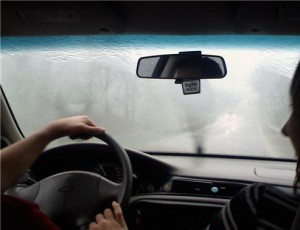 The world’s leading automakers stole the show at this year’s Consumer Electronics Show in Las Vegas, Nevada with the latest technological advances from autonomous vehicles to cars that communicate with each other.
The world’s leading automakers stole the show at this year’s Consumer Electronics Show in Las Vegas, Nevada with the latest technological advances from autonomous vehicles to cars that communicate with each other.
One of the newest upgrades and considered to become the hottest new automotive accessory is a heads-up technology displaying data on car windshields: everything from car status information to social media notifications.
Several automakers have already introduced windshield heads-up displays in some of their newest models. However, the displays being demonstrated at this year’s CES are more advanced and provide more functionality.
BMW showcased a system that will allow drivers to use their display to change the radio and show speed warnings if they drive over a preset limit. Meanwhile, Volvo advertised a system that will alert the drivers through flashing bright symbols when they are about to collide with another vehicle.
The system offered by Hyundai was introduced in its 2015 Genesis and it scans nearby cars, calculates the probability of upcoming crash and multicolored symbols on the windshield will alert the driver when it is needed.
Jaguar Land Rover demonstrated its “360 Virtual Urban Windscreen” which goes even further: its windshield will highlight pedestrians and suggest points of interest.
Despite the automakers say such display should cut down on distracted driving by preventing drivers from looking down and checking their phones, safety advocates say there is little data backing up this assertion and the digital windshields will make distracted driving worse. Heads-up displays have been used since World War II when they were available in the fighter aircrafts and nowadays, even trained jet pilots can face issues with distraction, according to some researches.
In spite of all that, analysts say, as the technology gets more affordable and accessible, the new vivid high-definition displays will definitely become a common part of our lives.
